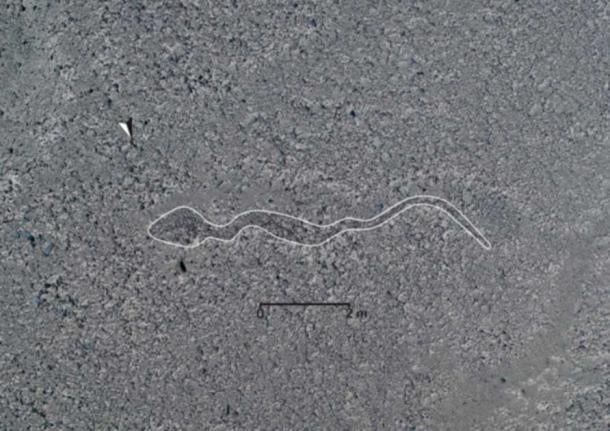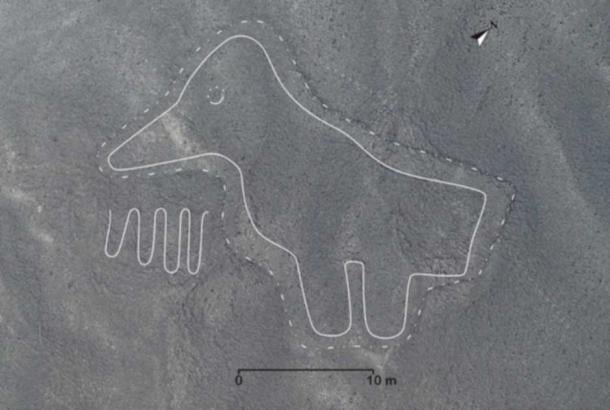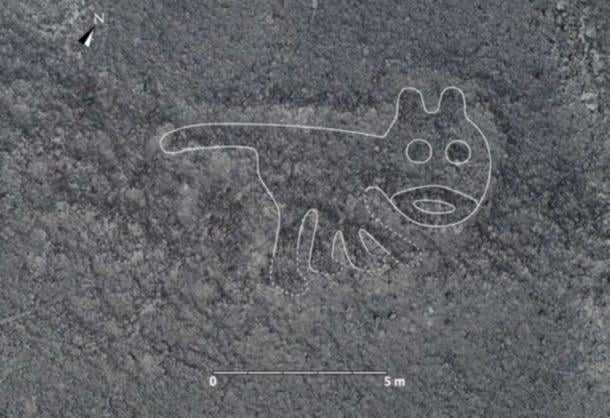
168 New Geoglyphs Discovered, Adding to the Enigma of Peru’s Nazca Lines
A fresh set of 168 geoglyphs have been discovered by researchers in Peru’s intriguing Nazca Lines UNESCO World Heritage Site. The newly found drawings depict humans, camelids, birds, orcas, cats and snakes as well as simple lines and geometrical patterns.
Interestingly, one of the 50 or so human figures in the set is cartoon-like, with big rounded eyes and a stubble-like patch around the mouth, and bears a resemblance to Homer Simpson, the popular American animated sitcom character, reports the Daily Mail!
According to Science Alert, when the Nazca Lines, located in the Nazca Desert some 400 kilometers (249 miles) south of Lima, was designated a World Heritage Site in 1994, only around 30 geoglyphs had been identified and they mostly depicted plants and animals. By 2019 the number had risen to around 200 geoglyphs, several of which were human-like figures. However, Peruvian archaeologist Luis Jaime Castillo told The Guardian in 2020, he believed this to be only 5 percent of the total number out there.
- The Perplexing Nazca Lines: Sacred Roads, Spirit Animals, or Water Sources?
- Cahuachi Necropolis, Sacred Burial Ground of the Nazca

A snake geoglyph just discovered with 168 other images in the Nazca desert. (Yamagata University)
Nazca Lines
The Nazca Lines are vast geoglyphs carved into the sandy, rocky earth of the Nazca Desert lying between the towns of Palpa and Nazca in southern Peru. They stretch across an area of nearly 500 square kilometers (190 square miles).
They were created around 2,000 years ago by the Nazca people who inhabited the region between around 200 BC to AD 600. Some of the geoglyphs, though, even predate the Nazca, and are attributed to the earlier Paracas culture.
Most of the lines are a shallow 10 centimeters (4 inches) to 15 centimeters (6 inches) deep and are formed by removing the black or reddish-brown iron oxide-coated pebbles of the Nazca Desert to expose a white sandy surface below. The sublayer contains high amounts of lime that has hardened to form a protective layer that prevents wind erosion to some extent.
Wooden stakes found in the ground at the end of some of the lines indicate that simple tools and surveying equipment were used to construct the lines that cover an extraordinary range of motifs from objects and shapes like triangles, trapezoids and spirals to flowers, trees and other plants, animals like a monkey, a condor-like bird, a humming bird, a killer whale, a pelican, a spider as well as humanoids and even a mythical beast sticking out its tongue.
- Ancient Runways and Flying Fish: Did the Nazca Culture Take Flight?
- Maria Reiche: The Governess of Nazca

A newly discovered bird geoglyph. (Yamagata University)
Although many theories have been advanced to explain what purpose the lines served, none of them is entirely satisfactory or conclusive. Some believe that they were etched to please the eyes of the gods in the sky. Another notion is that they point to the places where the sun and other heavenly bodies rose or set in the solstices and served as a kind of observatory. Thus, they might have had ritual astronomical significance. Or, they could simply have been artistic expressions with no deeper significance.
Since the geoglyphs are usually so vast that the shapes and patterns cannot easily be discerned at ground level, it was only after airplanes were invented that they came to be “discovered”. They are believed to have first been spotted by a pilot flying over the Nazca planes. However, since many are visible from the surrounding hilltops too, the locals were probably always familiar with them.

A cat-like geoglyph in the Nazca desert. (Yamagata University)
The 168 Newly Found Geoglyphs
The latest explorations by a team from Yamagata University working in collaboration with local archaeologists have added healthy number of 168 new geoglyphs, taking the total tally up to 358, although according to Castillo’s estimation this is still only a drop in the ocean.
Field surveys conducted by the Yamagata researchers between June 2019 and February 2020, using aerial photos and drones, helped them identify the new geoglyphs. Since these geoglyphs are simply etched into the soil by removing pebbles and rocks from the surface of the earth to expose the surface below, coupled with centuries of light erosion, they are sometimes difficult for the human eye to identify. So some of the information gathered by drones is even being scanned by AI to help pick any markings that the human eye might miss.
While it is hard to definitively date the new geoglyphs, based on the dating of the clay pots found near them, they are believed to have been created between 100 BC and AD 300.
The Yamagata University researchers intend to survey the entire length and breadth of the Nazca site with permission from the Peruvian Ministry of Culture and with the help of local archaeologists. By uncovering as many of these designs as they can, they hope to crack the mystery of their creation.
Top image: A newly found Nazca line image, a humanoid reminiscent of Homer Simpson. Source: Yamagata University
By Sahir Pandey
References
Cassela, C. 2022. Scientists Discover 168 Mysterious Nazca Geoglyphs in The Desert Sands of Peru. Available at: https://www.sciencealert.com/scientists-discover-168-mysterious-nazca-geoglyphs-in-the-desert-sands-of-peru.
Chadwick, J. 2022. More than 160 mysterious Nazca geoglyphs are discovered in Peru – including a Homer Simpson-style person, a snake and a cat-like creature. Available at: https://www.dailymail.co.uk/sciencetech/article-11533147/More-160-mysterious-Nazca-geoglyphs-discovered-Peru.html.
Collyns, D. 2020. Scratching the surface: drones cast new light on mystery of Nazca Lines. Available at: https://www.theguardian.com/science/2020/may/24/nazca-lines-drones-new-discoveries-peru.
Sakai, Masato Prof. 2022. 168 New Geoglyphs Discovered on the Nasca Pampa and Surrounding Areas. Yamagata University. Available at: https://www.yamagata-u.ac.jp/en/information/info/20221208/
















Comments
How could they have missed all these new ones, ...which, from the photos, look to be in better physical condition than the ones we already knew about.
Yamagata U’s Prof Sakai might want to wonder if he's being played by some modern jokesters. We can at least see that Luis Jaime Castillo Butters looks a bit dubious: https://www.science.org/content/article/leading-peruvian-archaeologist-o...
Nobody gets paid to tell the truth.
If they can only be fully appreciated from altitude, maybe they are exactly thus, like tarmac lights for the vimanas, celectial chariots etc of the fallen ones... Using the brookings report to keep us in ignorance was always a foolish policy.. to keep their paradigm they lie to ur face
infinitesimal waveparticles comprise what we call home the earth
manipulatable by thought ability supressed in humans since birth